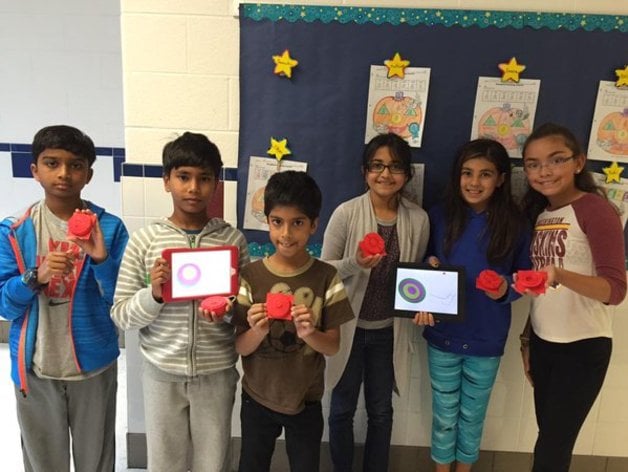
Layers of the Earth
thingiverse
Students utilized the Revolved 101 app on their iPads to create a model of the Earth's layers by employing lines of symmetry. Students must be able to identify and understand the four distinct layers of the Earth: Crust, Mantle, Outer Core, and Inner Core, as well as comprehend their proportions relative to each other. The Revolved 101 app is a free download from the Apple App Store. We used iPad minis for this project. The teacher can upload the .STL files directly from the app to Google Drive, email, Dropbox, or notes account to facilitate printing on the printer. Students worked with lines of symmetry in the Revolved 101 app to complete their models. The students learned about the different layers of the Earth in class. They needed to understand that geologists studied seismic waves generated by earthquakes in the early part of the 20th century to learn more about the Earth's interior structure. The Earth is composed of distinct layers: the crust, mantle, outer core, and inner core. Objectives: * Students should be able to identify the different layers of the Earth (crust, mantle, outer core, inner core). * Students must understand that a line of symmetry will duplicate anything done on one side to the opposite side. Standards: * Virginia SOL: 5.7c - The student will investigate and understand how the Earth's surface is constantly changing. * Common Core: + E.8.C.3 - Students know Earth is composed of a crust (both continental and oceanic); hot convecting mantle; and a dense, metallic core. + E.8.C.4 - Students know the very slow movements of large crustal plates result in geological events. In class, students learned about the layers of the Earth throughout the unit. They identified and understood the different layers of the Earth and what each layer is made of: (crust, mantle, outer core, inner core). Students got an iPad and opened the Revolved 101 app. They allowed students about 10 minutes to play around with the app and learn how lines of symmetry create different shapes and parts. Then students created a model in Revolved 101. Students needed to make sure their Earth model showed the four distinct layers. These layers should also be proportional to each other. Once students finished, the teacher ensured that the creation had all components and was ready for printing. The teacher uploaded the .stl file to either Google Drive, email address, or Dropbox account. The teacher printed the 3D model on their printer. Students working on their iPads Some of the creations from the Revolved 101 app Options to save as many different files. We used the .STL for our project This image shows lines of symmetry within the app students draw to create the model on the left. Skills Learned: * Symmetry * Earth layers Duration of Lesson: * After students started learning about the Earth unit in class, the actual 3D modeling and creating part took students about 45 minutes to complete. Preparation: * Before beginning in Revolved 101, students need to understand the layers of the Earth. They must be able to explain different proportions of each layer in relation to one another. * Teachers need to download the Revolved 101 app (free app!) and give students a few minutes to get familiar with it. Rubric and Assessment: * By the end of the project, students should have designed layers of the Earth including its important features. Students will get full credit on their 3D creations if they ensure that their Earth has all four layers and are correctly proportioned. References: * Brain Pop Intro Lesson: https://educators.brainpop.com/bp-topic/earth's-structure/ * Earth Lessons and Resources: https://sites.google.com/a/solteacher.com/olteacher-com/home/fifth-grade/fifth-grade-science-sol-5th/5-7c-earth-s-core Assessments: * Here are some good ideas for lessons: http://www.learner.org/interactives/dynamicearth/structure.html * https://www.cpet.ufl.edu/wp-content/uploads/2013/03/Mapping-the-Ocean-Floor-Worksheet-and-Lab-Activity.pdf
With this file you will be able to print Layers of the Earth with your 3D printer. Click on the button and save the file on your computer to work, edit or customize your design. You can also find more 3D designs for printers on Layers of the Earth.
